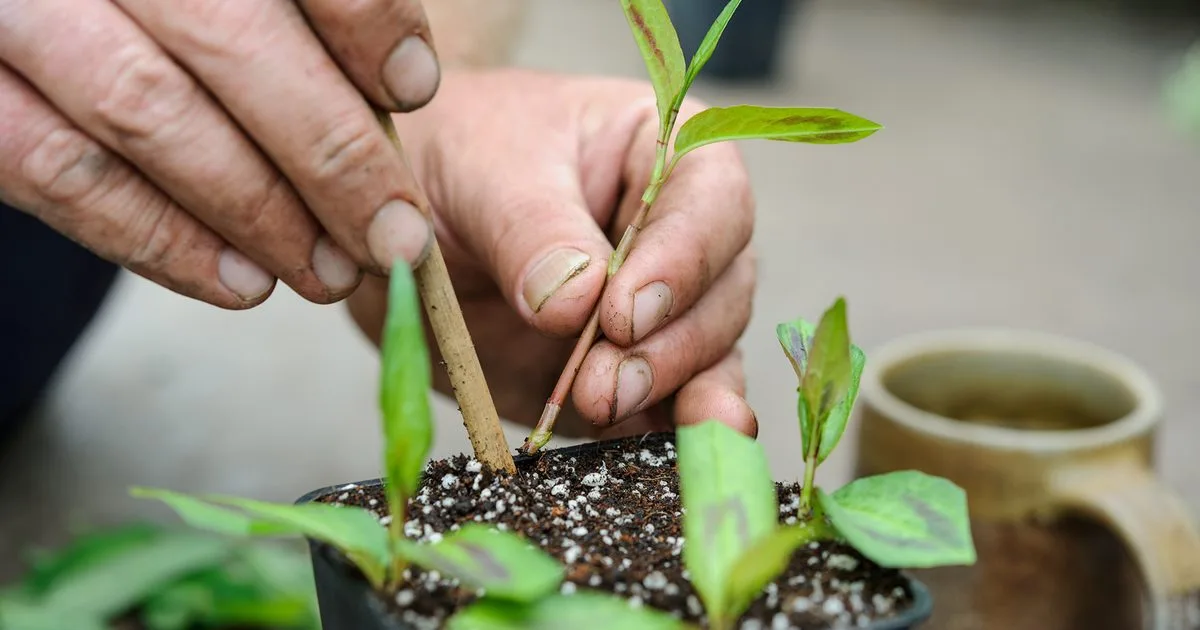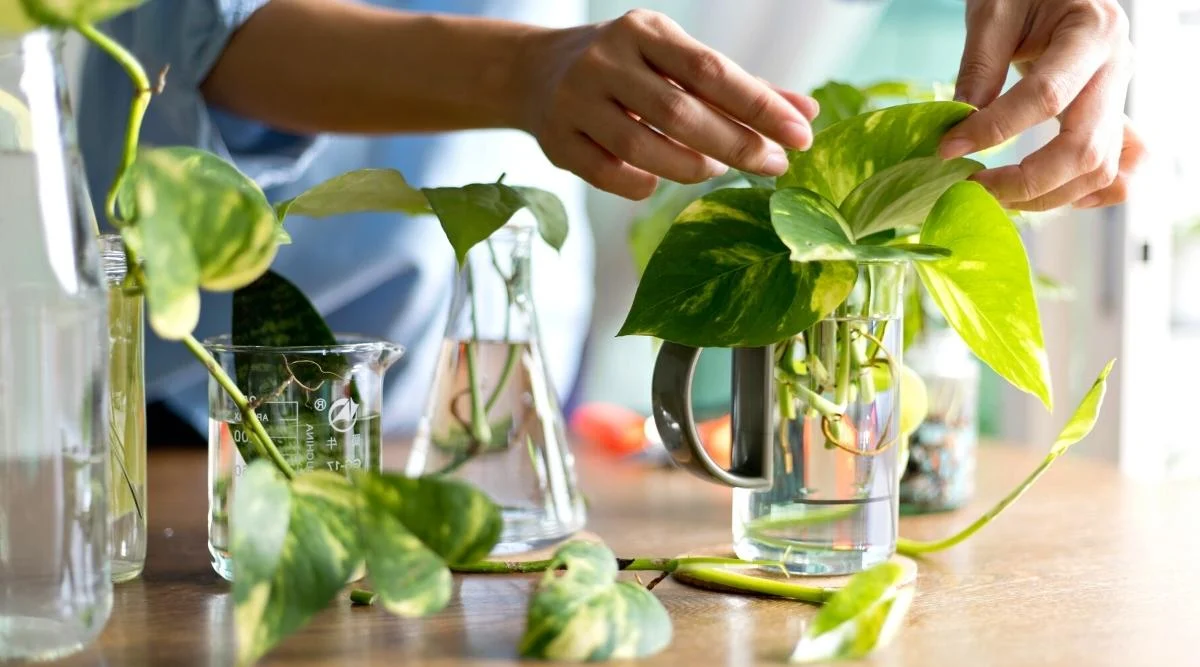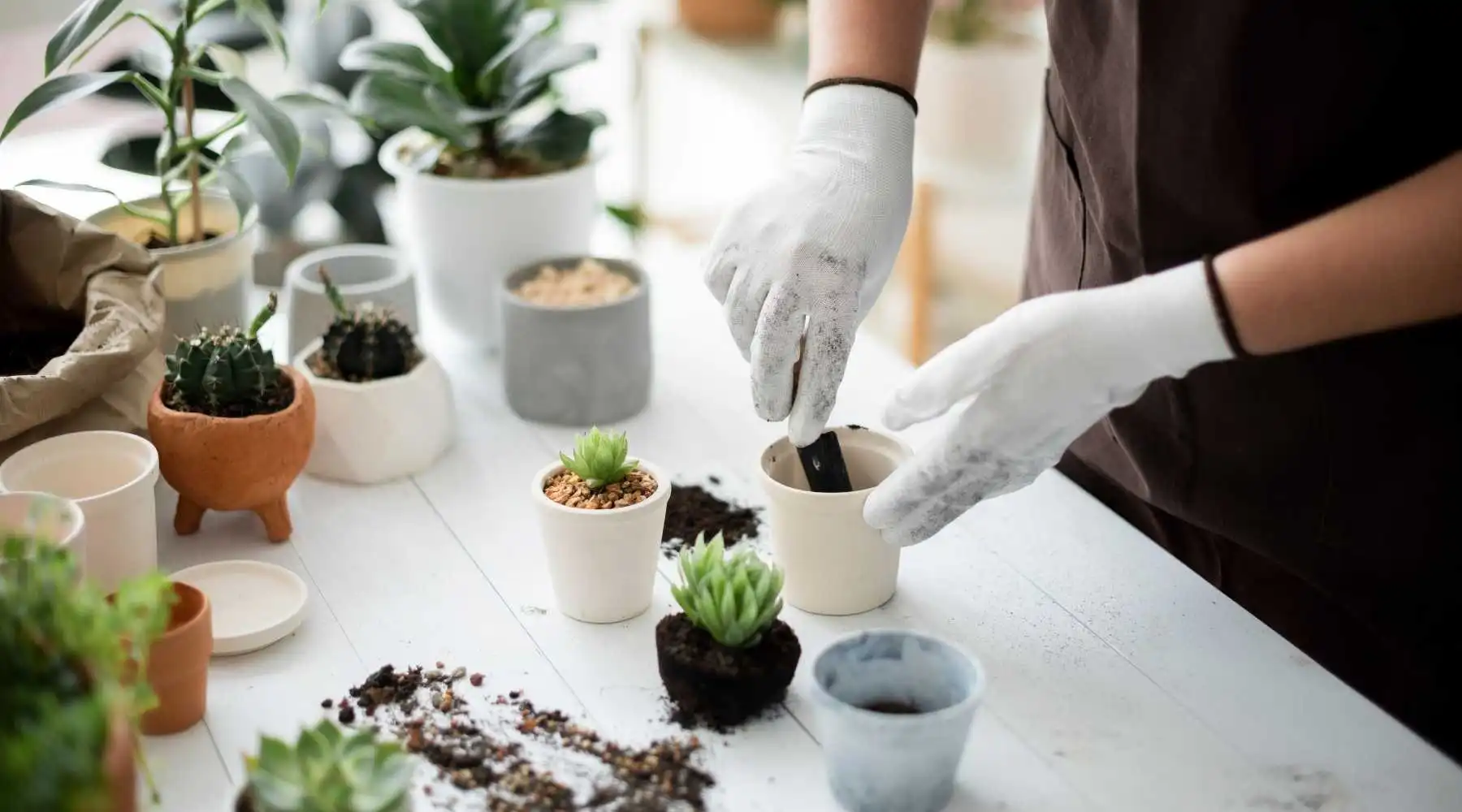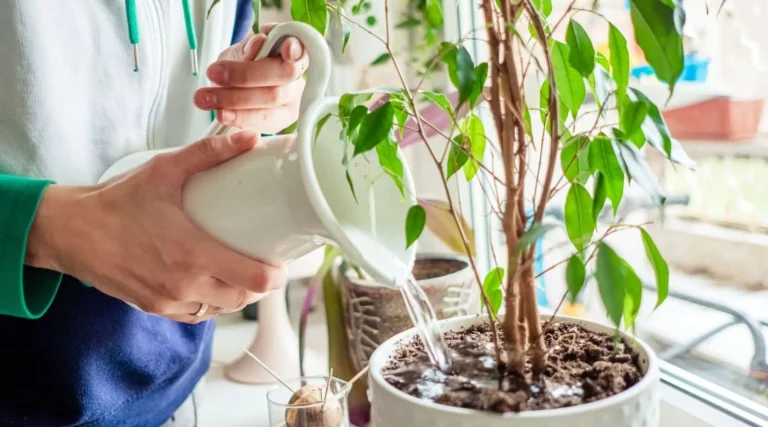Contents
Introduction
When it comes to growing indoor plants, one of the most exciting aspects is propagation. This process allows you to create new plants from your existing ones, saving money and expanding your indoor garden. But, like anything, propagation has its pitfalls. If you’re not careful, you might end up with more failures than successes. That’s where knowing the common mistakes to avoid can really make a difference.
Propagation might sound like a complicated science, but at its core, it’s pretty straightforward. It’s all about taking a part of a plant—like a cutting, seed, or offset—and encouraging it to grow into a new plant. Simple, right? Well, it can be, as long as you avoid a few common blunders. Whether you’re trying to multiply your favorite houseplant or start a new batch of succulents, knowing what not to do is just as important as knowing the right steps.
In this guide, we’ll walk you through the most common mistakes people make when propagating indoor plants. From choosing the wrong plant to messing up the growing conditions, we’ll cover it all. By the end, you’ll have a clear idea of what to avoid and how to set yourself up for propagation success. Ready to turn your indoor garden into a thriving plant haven? Let’s dive in!
Choosing the Wrong Plant for Propagation
So, you’re all set to start propagating your indoor plants, but there’s one key thing you need to get right before you dive in: choosing the right plant. It might seem like a no-brainer, but picking the wrong plant can lead to a whole lot of frustration and wasted effort. Let’s break down why plant choice matters and how to make sure you’re starting with the best candidate.

First off, not all plants are created equal when it comes to propagation. Some plants thrive and multiply effortlessly, while others just don’t play ball. If you’ve got a particular plant in mind, make sure it’s known for being a good candidate for indoor propagation. For example, pothos and spider plants are generally easy to propagate and great for beginners, while some more exotic plants might require a bit more expertise.
Next up, think about the health of the parent plant. Imagine trying to start a new plant from a sick or struggling parent. It’s like trying to bake a cake with stale ingredients—you’re not going to get the best results! Before taking cuttings or seeds, make sure your parent plant is healthy and vibrant. Look for signs like lush leaves, strong stems, and no signs of pests or disease. A healthy parent plant means a better chance of successful propagation.
By choosing the right plant and ensuring it’s in tip-top shape, you’re setting yourself up for a smoother and more rewarding propagation experience. So, before you start snipping or planting, take a moment to evaluate your plants and make sure they’re up for the job. Trust us, your future self will thank you!
Incorrect Propagation Method
Alright, so you’ve picked a healthy plant and you’re ready to get started with propagation. But hold on—before you start snipping or planting, let’s talk about one of the most crucial aspects of successful propagation: choosing the right method. Getting this part right is key to growing new plants successfully, so let’s dive into the different methods and what you need to know to avoid common pitfalls.

Propagation comes in a few main flavors: cuttings, seeds, and offsets. Each method has its own set of best practices, and using the wrong one can lead to disappointment.
Cuttings are one of the most popular methods for indoor plants. This involves taking a piece of the plant—like a stem or leaf—and encouraging it to grow roots and become a new plant. To do this successfully, you need to cut at the right angle and length. A common mistake here is cutting too much or too little. Generally, you want to take a cutting that’s about 4-6 inches long and has a few leaves. Cutting at an angle helps maximize the surface area where roots can develop.
Seeds are another option, but they come with their own set of challenges. Planting seeds involves understanding the specific needs of the plant, like how deep to plant them and how far apart they should be. Too deep or too shallow can hinder germination. Also, seeds can be a bit finicky about temperature and light, so make sure you’re giving them the right conditions.
Offsets are little plantlets that grow from the base of the parent plant. These can be gently separated and potted up to grow on their own. The key here is to handle them carefully and ensure they have enough roots to survive the separation process.
By choosing the right method and following these tips, you’re setting yourself up for a much smoother propagation process. Each method has its own requirements, so be sure to tailor your approach to the specific plant and method you’re using. With a little care and attention, you’ll be well on your way to growing new plants with ease!
Using the Wrong Growing Medium
Alright, you’ve got your plant, chosen your propagation method, and now it’s time to think about the growing medium. This is the stuff that your plant’s roots will grow into, so getting it right is crucial. But many folks end up using the wrong growing medium or don’t prepare it properly, leading to all sorts of issues. Let’s dig into why the right medium matters and how to avoid common mistakes.

Choosing the Right Medium: Not all growing mediums are created equal. Different plants have different needs, and what works for one might not work for another. For instance, succulents and cacti prefer well-draining soil, while many houseplants thrive in a moisture-retentive mix. Common options include regular potting soil, perlite, vermiculite, and even water. Each has its pros and cons. Regular potting soil is great for most indoor plants but might not be ideal for succulents. Perlite and vermiculite help improve drainage and aeration, which is essential for root health.
Medium Preparation and Sterilization: Before you use your growing medium, it’s important to prepare it properly. Unsterilized soil or mediums can harbor pests and diseases that can ruin your propagation efforts. To avoid this, you can bake your soil in the oven or use a commercial sterilizing product to kill off any unwanted critters. Properly preparing your medium ensures that it’s clean and ready to give your new plants the best start.
Using the Wrong Medium: A common mistake is using a medium that’s not suited to your plant’s needs. For example, using garden soil or a very heavy mix for plants that need well-draining conditions can lead to waterlogged roots and plant rot. Conversely, using a medium that dries out too quickly can stress plants that need consistent moisture. Always check what kind of medium is recommended for your specific plant and match it accordingly.
By selecting the right growing medium and preparing it correctly, you’re setting your plants up for the best possible start. Take a little extra time to make sure you’re using the right mix, and you’ll see much better results in your propagation efforts. With the right medium, your new plants will have the foundation they need to grow strong and healthy!
Inadequate Light Conditions
Okay, you’re on a roll with your plant propagation, but there’s one more crucial factor to consider: light. Light might seem like a basic need, but it’s actually a major player in whether your propagation efforts will be successful. Get the lighting wrong, and you could end up with weak, spindly plants or nothing at all. Let’s break down why light is so important and how to get it right.
Understanding Light Requirements: Different plants have different light needs, and understanding these can make or break your propagation success. Some plants need bright, direct light to thrive, while others do better in lower light conditions. For instance, succulents and herbs usually need a lot of bright light, whereas ferns and certain houseplants can get by with less. It’s important to know what kind of light your plant prefers and to match it to its needs.
Adjusting Indoor Light Conditions: If you’re propagating indoors, you might need to adjust your space to meet your plant’s light requirements. This could mean placing plants near windows where they can get natural light or using grow lights to supplement. If you’re using grow lights, make sure they’re positioned at the right distance from your plants and are on for the recommended duration each day.
Effects of Insufficient Light: One of the biggest mistakes people make is not providing enough light. Without adequate light, plants can become leggy (with long, stretched-out stems) and weak, which makes it harder for them to establish roots and grow. If you notice your cuttings or seedlings stretching towards the light, it’s a sign they might need more.
Solutions for Low Light Environments: If your indoor space doesn’t get a lot of natural light, don’t worry—there are ways to work around it. Consider using LED grow lights, which are energy-efficient and can be tailored to the specific light spectrum that plants need. Additionally, rotating your plants to different spots can help them get a more even exposure to available light.
By understanding and providing the right light conditions for your plants, you’ll give them the best chance to thrive during propagation. With a little attention to their light needs, you’ll help your new plants grow strong and healthy, setting the stage for a lush indoor garden. So, shine a light on your propagation efforts—literally—and watch your plants flourish!
Over or Under Watering
Watering is one of the most critical aspects of plant care, and it’s especially important when you’re propagating indoor plants. Get it right, and your new plants will grow strong and healthy. Get it wrong, and you could end up with wilted or rotting cuttings. Let’s break down how to strike the right balance with watering and avoid common mistakes.
Understanding Watering Needs: Each plant has its own watering requirements, and this can change during different stages of propagation. For instance, cuttings usually need more consistent moisture to encourage root growth, while established plants might need less frequent watering. It’s important to understand your plant’s specific needs to avoid either overwatering or underwatering.
Signs of Overwatering: Overwatering is a common issue that can lead to problems like root rot and mold. Look for signs such as yellowing leaves, a musty smell, or soil that stays soggy. If you notice these signs, it’s a good idea to cut back on watering and ensure that the growing medium has good drainage to help prevent water from pooling.
Signs of Underwatering: On the flip side, underwatering can also cause problems. Plants that are not getting enough water might show signs like wilting, dry or crispy leaves, and slow growth. If you notice these symptoms, check the soil moisture and make sure you’re watering your plants adequately.
Water Quality and Temperature: It’s not just about how much water you give but also what kind of water you use. Tap water can sometimes be too harsh for plants, especially if it contains chlorine or other chemicals. Using filtered or distilled water can be gentler on your plants. Additionally, water temperature matters; using room-temperature water is usually best, as very cold or hot water can shock your plants.
Watering Frequency and Amount: The key to successful watering is to find the right balance. For most plants, you want to keep the soil consistently moist but not waterlogged. A good rule of thumb is to check the soil’s top inch or so—if it feels dry, it’s time to water. Be careful not to flood the soil; instead, water gently and evenly to ensure that the entire root zone gets adequate moisture.
By mastering the art of watering, you’ll help ensure that your propagated plants have the best possible start. Keep an eye on their needs, watch for signs of over or under watering, and adjust accordingly. With the right approach, your plants will grow strong, healthy roots and thrive in their new environment.
Temperature and Humidity Issues
When it comes to propagating indoor plants, temperature and humidity are like the unsung heroes of plant care. Get these factors right, and your plants will grow happily and healthily. Get them wrong, and you could end up with a lot of wilted or failed attempts. Here’s a breakdown of why temperature and humidity matter and how to keep them just right for successful propagation.
Optimal Temperature Ranges: Different plants have different temperature needs, and this can make a big difference in how well they propagate. Most indoor plants prefer a stable temperature range—typically between 65°F and 75°F (18°C to 24°C). If temperatures dip too low or rise too high, it can stress the plants and hinder root development. Be mindful of drafts from windows or air conditioners, as these can create temperature fluctuations that might be harmful.
Avoiding Temperature Extremes: Extreme temperatures can be particularly damaging. Too much cold can slow down or even halt root growth, while excessive heat can lead to drying out and heat stress. It’s important to keep your plants away from heaters, air vents, and direct hot sunlight. Use a thermometer to monitor the temperature around your plants and make adjustments as needed.
Maintaining Humidity Levels: Humidity is another crucial factor in plant propagation. Many indoor plants thrive in higher humidity, especially during the propagation phase. Low humidity can cause cuttings to dry out too quickly and hinder their ability to root. If you’re propagating in a dry environment, consider using a humidity tray, misting your plants, or placing a small humidifier nearby to keep the moisture levels up.
Monitoring Humidity: You can easily monitor humidity levels with a hygrometer, which measures the amount of moisture in the air. Most indoor plants do well in humidity levels between 40% and 60%. If your home is particularly dry, especially during winter months, keeping an eye on these levels can help you make necessary adjustments.
Creating a Suitable Environment: For plants that require higher humidity, a simple trick is to place them in a clear plastic cover or a propagator, which creates a mini greenhouse effect. This helps to keep the air around the plants moist and stable. Just be sure to ventilate occasionally to prevent mold growth.
By paying attention to temperature and humidity, you’re setting up your propagation efforts for success. Keep your plants in a stable, suitable environment, and they’ll have the best chance to root and grow into healthy new plants. With the right conditions, you’ll see your propagation projects thrive and flourish!
Failure to Provide Adequate Air Circulation
When it comes to nurturing indoor plants through propagation, air circulation might not be the first thing that comes to mind, but it’s actually a crucial factor. Good airflow helps prevent issues like mold and mildew, which can be detrimental to your new plants. Here’s why air circulation matters and how to make sure your plants get enough of it.
Importance of Airflow: Plants, especially during propagation, need proper air circulation to thrive. Without it, the air around them can become stagnant and humid, creating a perfect environment for mold and fungal diseases. Good airflow helps keep the environment around your plants dry and reduces the risk of these problems, ensuring that your cuttings and seedlings stay healthy and strong.
Signs of Inadequate Airflow: If your plants aren’t getting enough air circulation, you might notice signs like moldy spots on the soil surface, yellowing or wilting leaves, and a general lack of growth. These symptoms indicate that the air around your plants is too still and humid, which can lead to disease and rot.
Improving Air Circulation: To boost airflow around your plants, there are several easy steps you can take. One simple method is to gently fan your plants with a small, oscillating fan. This helps keep the air moving and reduces humidity around your plants. If you’re using a humidity dome or greenhouse setup, make sure to occasionally open it up to allow fresh air to circulate.
Positioning Plants: The placement of your plants also plays a role in air circulation. Avoid crowding plants too closely together, as this can block airflow and create a microenvironment where issues like mold can thrive. Giving each plant some space allows air to flow freely around them and helps ensure they get the circulation they need.
Tools and Devices: If you’re growing a lot of plants or have a larger setup, consider investing in a small fan or air circulation system. These tools can help maintain good airflow in more extensive propagation areas and keep the environment around your plants optimal for growth.
By ensuring that your plants have adequate air circulation, you’re setting up a healthier environment for them to root and grow. Good airflow helps prevent diseases and encourages strong, vibrant plants. So, take a moment to check the air circulation in your propagation area and make adjustments as needed—your plants will thank you for it!
Lack of Patience and Consistency
When it comes to propagating indoor plants, patience and consistency are your best friends. It’s easy to get excited about seeing new plants grow, but successful propagation requires a steady hand and a little bit of time. Here’s why patience and consistency are crucial and how to maintain them throughout the propagation process.
Understanding Propagation Timelines: One of the biggest mistakes in propagation is expecting instant results. Plants don’t grow overnight, and propagation can take several weeks or even months, depending on the method and plant species. For example, stem cuttings might take a few weeks to develop roots, while seeds can take much longer to germinate. Understanding and accepting these timelines can help you stay patient and avoid frustration.
Common Mistakes Due to Impatience: Impatience often leads to mistakes like overwatering, frequently disturbing the plants to check for progress, or trying to move the plants to a different location too soon. These actions can stress the plants and hinder their growth. It’s important to let the plants settle into their environment and avoid unnecessary disturbances.
Consistency in Care: Consistency is key in maintaining the right conditions for your propagating plants. This means regularly checking on their needs, like watering, light, and temperature, and making adjustments as necessary. Keeping a consistent care routine helps ensure that the plants get what they need to thrive. Set reminders or create a simple care schedule to help you stay on track.
Keeping a Propagation Journal: A great way to stay patient and consistent is by keeping a propagation journal. Documenting your process—when you took cuttings, how often you watered, and any changes in conditions—can help you track progress and make informed adjustments. Plus, it’s rewarding to look back and see how far your plants have come!
Final Tips for Success: Remember that propagation is a learning process, and it’s okay to make mistakes along the way. With each attempt, you’ll gain more experience and improve your skills. Stay patient, keep up with consistent care, and celebrate the small victories as your plants begin to grow and thrive.
By embracing patience and maintaining consistency, you’re giving your plants the best chance to succeed. Propagation is a journey, and with the right approach, you’ll see your efforts pay off with lush, healthy new plants. So take a deep breath, stick to your routine, and enjoy the process of growing your indoor garden!
Conclusion
So, you’ve navigated through the ins and outs of plant propagation, and now it’s time to wrap things up. By avoiding the common mistakes we’ve covered, you’re well on your way to becoming a successful plant propagator. Here’s a quick recap and a few final tips to help you keep your propagation efforts on track.
Recap of Common Mistakes: We’ve touched on several key areas where mistakes can occur, including choosing the wrong plant, using incorrect propagation methods, and dealing with inadequate light, watering, temperature, and humidity. Each of these factors plays a crucial role in ensuring that your propagated plants grow strong and healthy. Remember, getting the basics right—like picking the right plant, using the correct method, and maintaining proper environmental conditions—sets the stage for success.
Final Tips for Successful Propagation: To wrap things up, here are a few final tips to keep in mind:
- Be Patient and Consistent: Propagation takes time, so stay patient and consistent in your care routine. Regularly check on your plants and make adjustments as needed.
- Monitor and Adjust: Keep an eye on factors like light, watering, and temperature, and adjust as necessary to create the best environment for your plants.
- Learn and Adapt: Don’t be afraid to learn from your mistakes. Each propagation attempt is a learning experience that will help you refine your techniques and improve your results.
Resources for Further Learning: If you’re eager to dive deeper into the world of plant propagation, there are plenty of resources available. Books, online articles, and gardening forums can provide additional insights and tips to help you expand your knowledge. Connecting with fellow plant enthusiasts can also offer valuable advice and support.
By keeping these points in mind and applying what you’ve learned, you’ll set yourself up for successful plant propagation and enjoy a thriving indoor garden. So go ahead, get your hands dirty, and have fun growing new plants. With the right approach, your propagation projects will flourish, and you’ll be well on your way to becoming a propagation pro!



